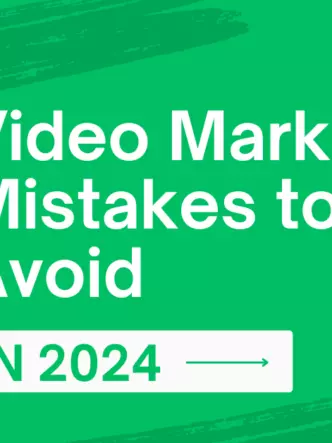There was a time when panoramic images and YouTube real estate walkthroughs were unexpected novelties. The ability to qualify leads before booking walkthroughs with interested clients represented a key value.
Fast-forward to 2020, and a new real estate culture has emerged. Public health concerns, like social distancing and limited contact, have taken priority over the ability to see and touch a new home or apartment in person. The real estate industry has shifted, and video marketing now finds itself at the center of the sales experience.

New technology is helping drive the value of that experience.
While simple YouTube real estate walkthroughs can complement the in-person experience, they cannot replace it.
3D video, with a full 360-degree field of vision, on the other hand, can stream a lifelike experience directly into home buyers’ favorite devices.
According to Zillow’s research team, 3D home tours are up 408% from February.
Realtors who use state-of-the-art technology to connect with home buyers are cornering the market. One out of every five tour requests made on the popular Redfin platform are video-chat requests.
Real estate professionals in every industry have come to rely on virtual tools and 3D walkthrough videos to close deals in light of the ongoing public health crisis.
Virtual office tours are taking place next to in-home 360-degree video presentations, while buyers stay at home.
How to make a 360-degree real estate video
3D video brings the real estate walkthrough to life in a way that regular video cannot. The user has the freedom to look in any direction while the video runs, creating a full and immersive experience. Small direction arrows allow viewers to navigate the space in real-time while the video plays, making the resulting video as lifelike as possible.
Check out how the NBA leverages this technology en route to creating an awesome, interactive viewing experience:
Shooting a 360-degree video is not as simple as shooting a traditional flat video. It requires specialized equipment and software. You will need to acquire 3D video equipment for real estate videography, and use compatible 3D video editor software.
Similarly, you will need to use compatible video hosting platforms, specifically those which support 360-degree video content. Not all hosting platforms will support this kind of experience.

Apps you can use to easily create virtual real estate tours
One of the easiest ways to create 3D content is through your smartphone. Apps like V360 or 360cam allow users to easily create and edit high-quality videos using a special camera that connects to Android and iOS devices.
You will have to purchase the special 3D camera that goes with each of these apps, and then use the app as your video editor. While both app-based solutions are simple, they come with unique benefits and drawbacks:
Giroptic 360cam
This app works specifically with the Giroptic 360cam, which famously completed a kickstarter campaign in 2016 to bring the first consumer-ready 3D camera to market. With used cameras starting at $400, it is a somewhat dated and expensive option compared to its competitors.
V360
This app supports a variety of 360-degree cameras, including the best-selling GoPro Hero Max, the affordable Samsung Gear 360, and the Ricoh Theta 360. It makes editing 3D video much easier, enabling busy professionals to use their GoPro for realtor listings with ease.

Best 3D video cameras for 2020
There are a broad variety of 360-degree video cameras available on the market, but the following are the highlights that real estate professionals should focus on:
1. GoPro Hero Max
GoPro is a reputable name for portable digital photography, and their 360-degree camera does not disappoint. It features built-in image stabilization and supports live streaming, which is a valuable bonus for COVID-19 real estate walkthroughs.
However, it requires a selfie-stick mount, and does not support a tripod. This can make the resulting videos look a little less professional than others.
2. Samsung Gear 360
As one of the least expensive options in the 3D camera market, the Samsung Gear 360 is definitely a popular option for real estate professionals looking for a 3D video marketing solution that is easy to use.
It features a tripod mount and decent-enough quality to create a compelling real estate virtual tour, but it is not compatible with non-Samsung Android phones, and newer iPhones cannot use some of its features.
3. Ricoh Theta Z1
The Ricoh Theta Z1 is an expensive camera, but it offers the highest image quality available on the market, especially in low light conditions — like the interior of a home. Image quality is deeply correlated with lighting quality, and you can’t always bring professional-quality lighting into every home you want to present.
The main drawback to using the Ricoh Theta Z1 is the fact that editing videos requires using two separate software applications. This can make using the device to create compelling virtual tours somewhat unwieldy. Other than that, it is the best 3D real estate camera currently available.

Professional video hosting sites are worth the investment
Your choice of video hosting platform matters as much as your choice of camera and editing software. Whether you are just starting out in the world of 360-degree video, or you are already a Zillow-certified photography program certificate holder, you will need state-of-the-art video marketing features to ensure the best experience for potential property buyers.










